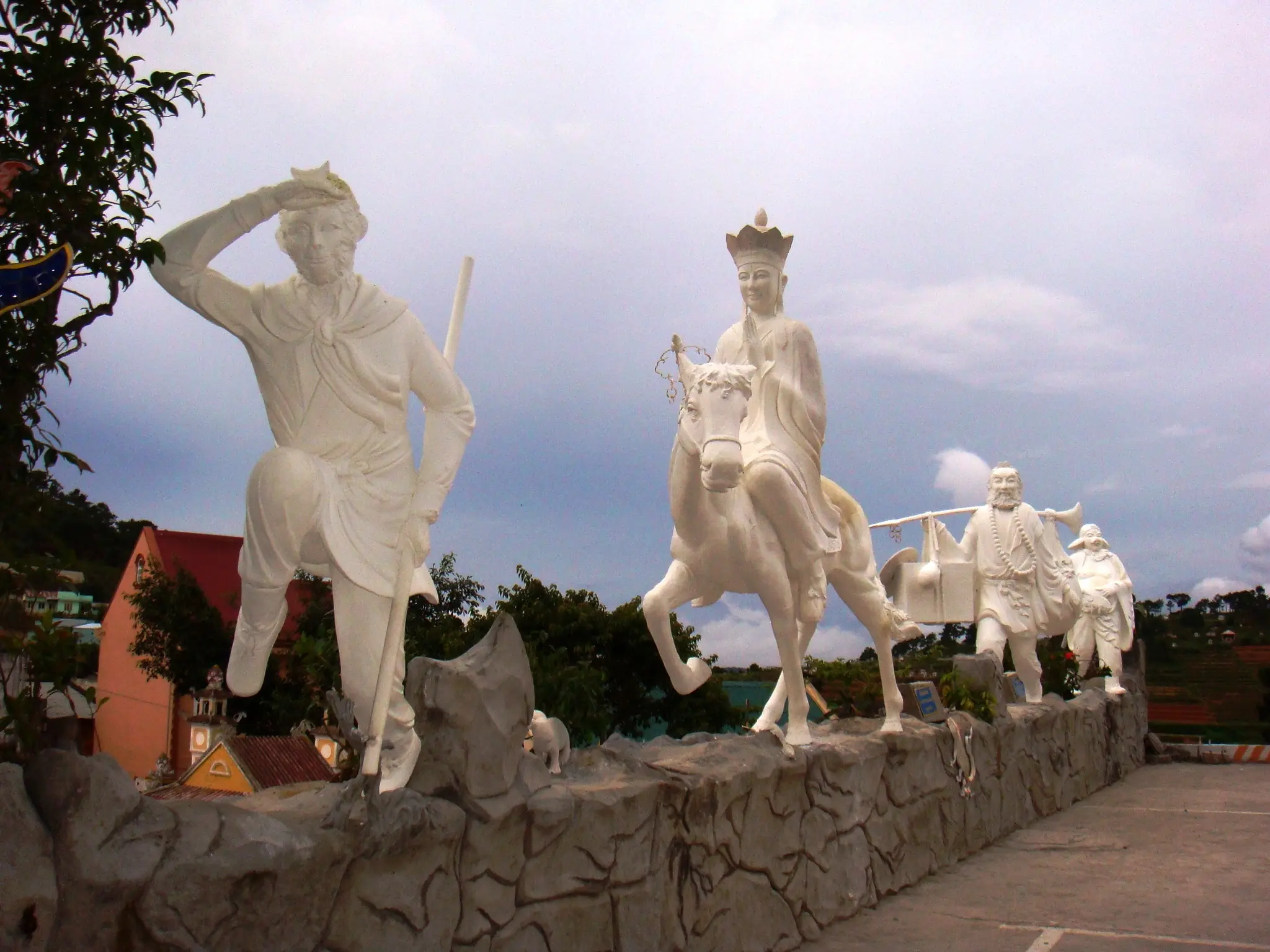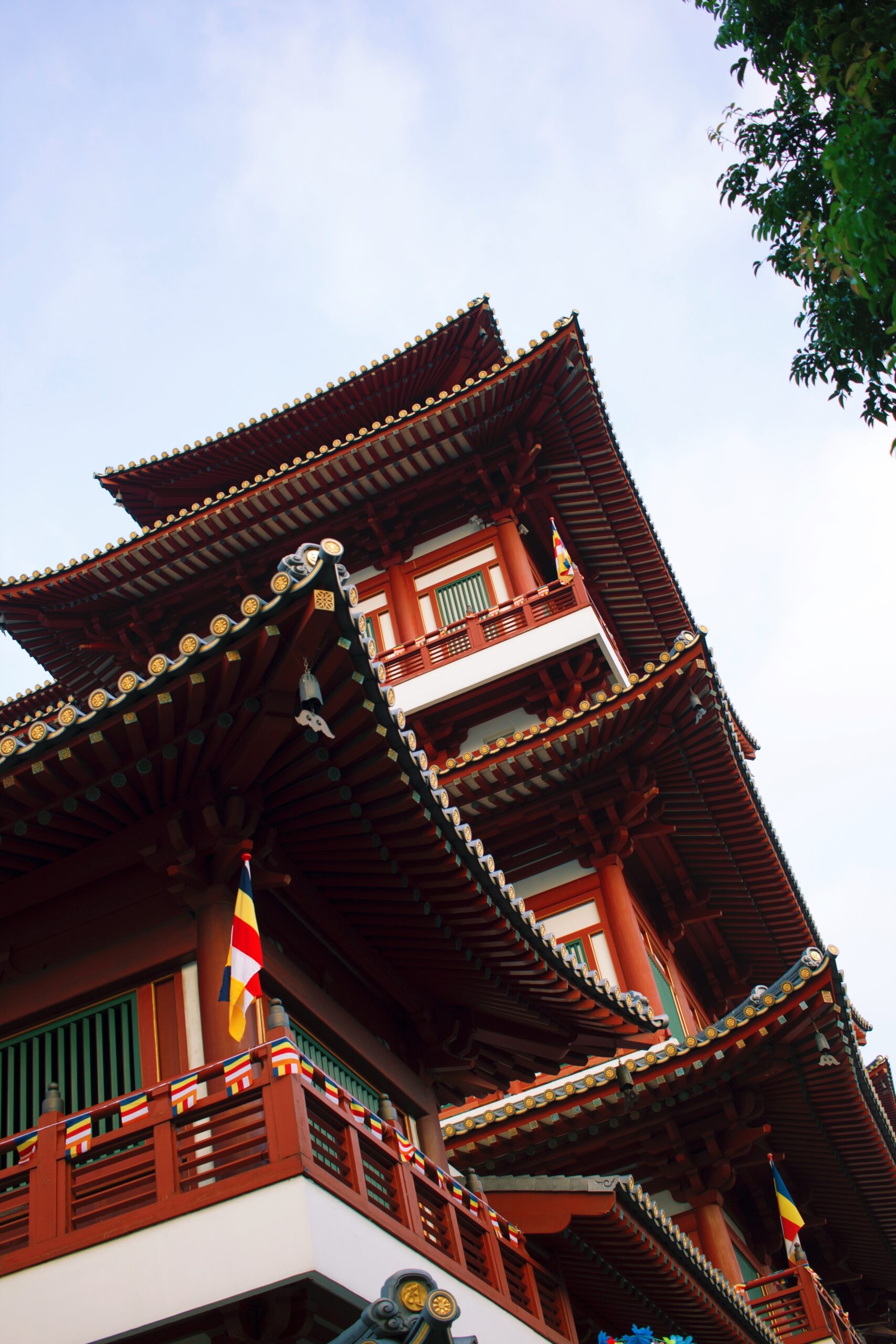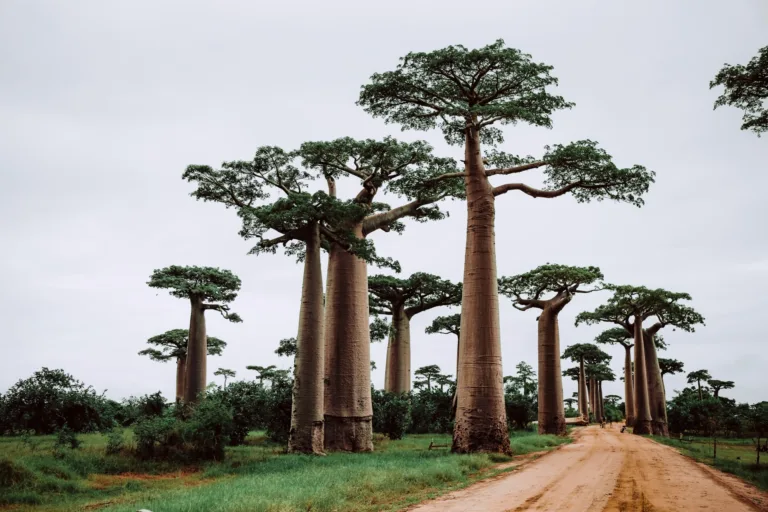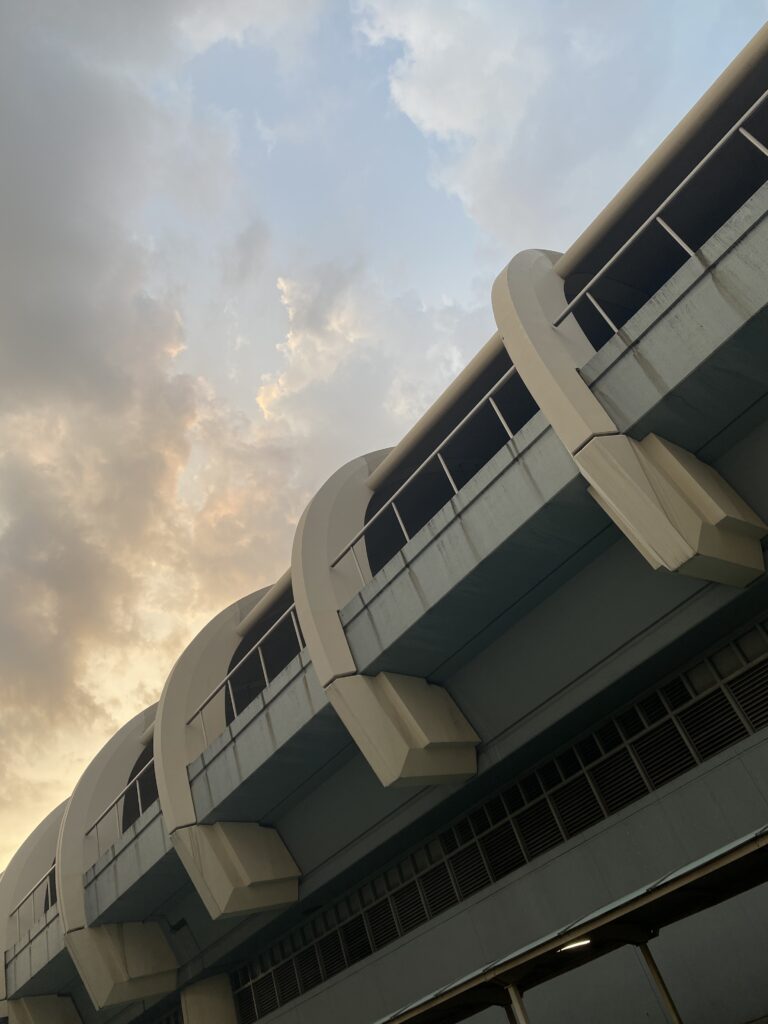Step foot into Luxor, the dazzling jewel of Egypt, often referred to as the world’s greatest open-air museum!
In this enchanting city, each sunrise illuminates a mystical landscape that is sure to captivate. And every sunset by the Nile is bound to be etched in your heart.
The historical sites around Luxor are separated by the Nile River and it usually comes down to East vs West.
Though honestly, you will most likely be visiting both sides as they both have not-to-be-missed gems whether it’s the Luxor and Karnak Temple at the East and the Valley of the Kings and Hatshepsut’s Temple in the West, you won’t go wrong with either!
Table of Contents
ToggleHistory of Luxor
Luxor, known in ancient times as Thebes, stands as a monument to the grandeur of Egypt’s bygone eras. Established around 3200 BC, Thebes became the royal capital of Egypt by the 11th Dynasty during the Middle Kingdom around 2100 BC.
Its prominence rose to the zenith during the New Kingdom (circa 1550–1070 BC), where it flourished as the religious and political axis of the ancient Egyptian empire.
Under Greek influence (c. 332–30 BC), Thebes continued as a site of religious and tourist importance. Thebes also became part of the Roman Empire (30 BC–AD 641), with continued construction and restoration projects. It was during this period that the city was known as Luxor.
Around the Islamic Period (Post-AD 641), following the Arab conquest, Luxor fell into gradual decline, with many of its monuments buried under the sands or repurposed, leading to a loss of many ancient structures.

What to Know Before Going to Luxor
- Luxor: The name “Luxor” derives from the Arabic al-Uqsur, meaning “the palaces,” which in turn is a corruption of the Latin castrum, referring to the Roman forts built in the area.
- Waset: The original name for Thebes in ancient Egyptian was “Waset”, which was also the name for the Scepter, a symbol of power.
- Photography: Certain areas especially in the Valley of the Kings do not allow photography, and if you do and they catch you, you will have to bribe them with “Baksheesh“. It’s one of the many “scams” I ran into while traveling around Luxor.
- Banana Island & Crocodile Island: No doubt you will come across advertisements to go to these islands from the myriad of Felucca boat drivers as you walk beside the Nile. In my honest opinion, they are really not worth it and you are better off just admiring the Nile from its banks. If a Felucca boat ride is something you are keen on trying out then definitely go for it but perhaps just a cruise around would save you some money. I was quoted around 300 EGP (9 USD) for this “tour.” Essentialy they’ll take you to an island out on the Nile where you can eat bananas growing from trees and Crocodile island is where they have a singular crocodile trapped in a ditch which makes for an excruciating sight.
- Horses & Donkeys: Please don’t ride the donkeys, some of the ones I saw were severely maltreated and looked so famished.
- Hashish: You’ll find a lot of offers for hashish and weed from the donkey drivers, better to be safe than sorry in a foreign country.
Best Sites to See on Luxor's East Bank

1. Luxor Temple
Luxor Temple was conceived as part of the Theban Triad’s sanctuary, the site’s religious significance is rooted in the Opet festival, a jubilant ceremony that was essential to the renewal of kingship.
During this festival, the divine essence of kingship was rejuvenated through a symbolic marriage between the pharaoh and the goddess Opet. And it’s here, amid the remnants of chapels built by Tutankhamun and rebuilt by Horemheb, where one feels the pulse of ancient ritualistic life.
In the temple’s Hypostyle Hall, 14 massive papyrus-topped columns rise toward the sky, a forest of stone that once supported a roof, now lost to time, allowing daylight to play among the pillars.
One of the lesser-known jewels of the temple is the shrine dedicated to Alexander the Great, tucked in the rear, where the Macedonian conqueror portrayed himself as a pharaoh, a direct attempt to legitimize his rule over Egypt by linking himself to its ancient traditions.

2. Karnak Temple
The Karnak Temple complex, known as Ipet-isut (Most Select of Places) by the ancient Egyptians, is an expansive area of divine precincts, pylons, chapels, and obelisks, sprawling over 200 acres. It was primarily dedicated to the Theban Triad: the great god Amun-Re, his consort Mut, and their son Khonsu.
This was the place where the gods were believed to reside on earth, and the temple complex served as an interface between the divine and the mortal.
Karnak’s Hypostyle Hall is one of its most astonishing features. Covering an area large enough to fit Notre Dame Cathedral, it contains 134 colossal columns arranged in 16 rows, with the central 12 columns standing at a staggering 23 m (75 ft) high. Keep your eyes out for famous symbols such as the Ankh, Djed, and the Eye of Horus.
One cannot overlook the significance of the Great Obelisk of Hatshepsut, which at one time stood as a pair. Standing at 30 meters (97 feet) and weighing over 300 tons. The remaining obelisk is still the tallest in Egypt, with its missing partner speculated to have fallen victim to a Roman emperor’s vanity, now lying fractured upon the ground.
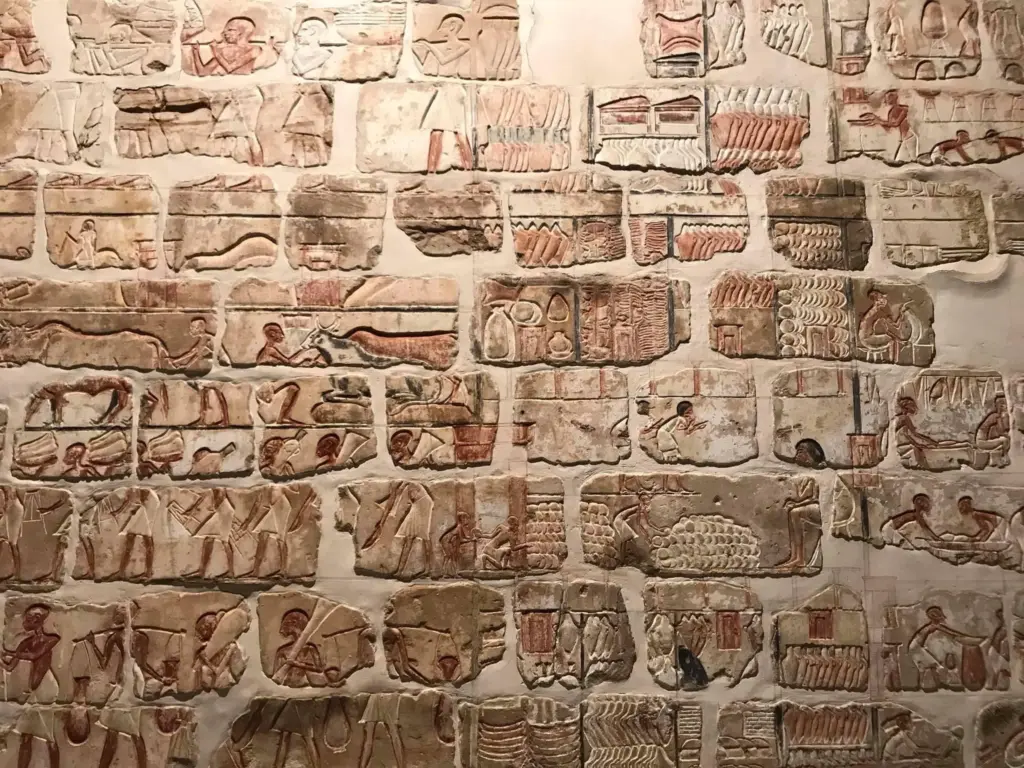
3. Luxor Museum
Inaugurated in 1975, the museum’s design embraces a minimalist aesthetic, ensuring that your attention is drawn immediately to the artifacts themselves. The collection, though not as extensive as that of Cairo‘s Egyptian Museum, is unique for its careful presentation and the clear chronological arrangement that takes you on a journey from the Old Kingdom right through to the Mubarak era.
Another highlight is the wall of 283 sandstone blocks from the wall of Akhenaten’s temple at Karnak. These blocks, known as talatat, display the unique art style that flourished during Akhenaten’s reign and offer insight into the controversial period of Atenism.
Luxor Museum is also where I met a fellow Couchsurfer who just so happened to be the only other person in the museum at that time. That fated meeting helped me out so much after I got kicked out of my Couchsurfing host’s place due to the weirdest of circumstances. That’s after all the difficulties in Cairo too!
If you are taking a taxi to the Luxor Museum, beware of taxi scams saying that it is closed due to some holiday or lunch break, it really isn’t. That’s how I got roped into the Banana Island and Crocodile Island boat ride.

4. Temple of Montu
The Temple of Montu in Medamud, situated northeast of Luxor, is an homage to the falcon-headed god Montu, an ancient deity of war once highly revered in the Theban region.
Montu’s worship dates back to the 11th Dynasty (circa 21st century BCE), where he was celebrated as a god of victory and heroism.
The existing ruins at Medamud are primarily of a reconstruction undertaken by the Ptolemaic kings, specifically Ptolemy VIII Euergetes II, who aimed to demonstrate continuity and reverence for the traditional gods of Egypt, thereby legitimizing their own rule.
Although much smaller than the sprawling complexes at Karnak and Luxor, the temple is distinct for its large propylon or monumental gateway, which leads to an open courtyard.
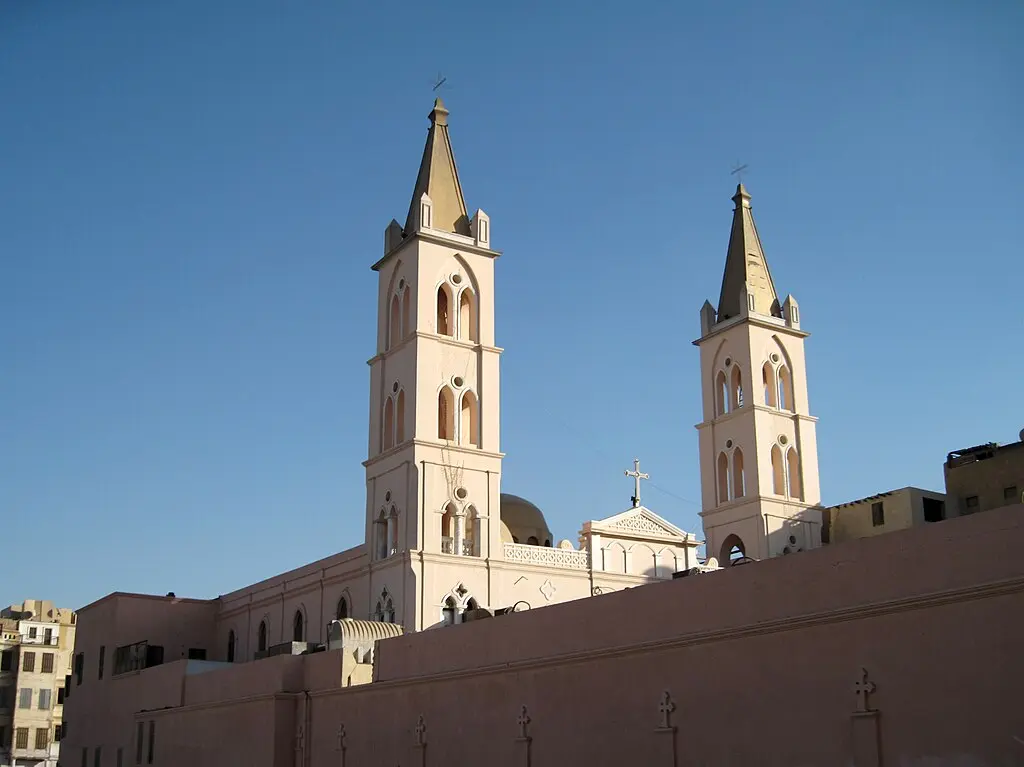
5. St. Mary Church
The Coptic Orthodox Church of St. Mary, represents a significant Christian landmark amidst the predominantly ancient Egyptian monuments of Luxor.
The Coptic Orthodox Church is one of the oldest Christian communities in the world, tracing its origins to Saint Mark the Evangelist, who is believed to have brought Christianity to Egypt in the first century CE. The Coptic community has played a vital role throughout Egypt’s history, with a heritage that has endured Roman persecutions, Byzantine politics, and Islamic conquests.
A visit to St. Mary Church is a chance to see a different side of Luxor. It offers a window into the contemporary spiritual life that is still vibrantly practiced within the very landscape that cradles the relics of an ancient civilization.
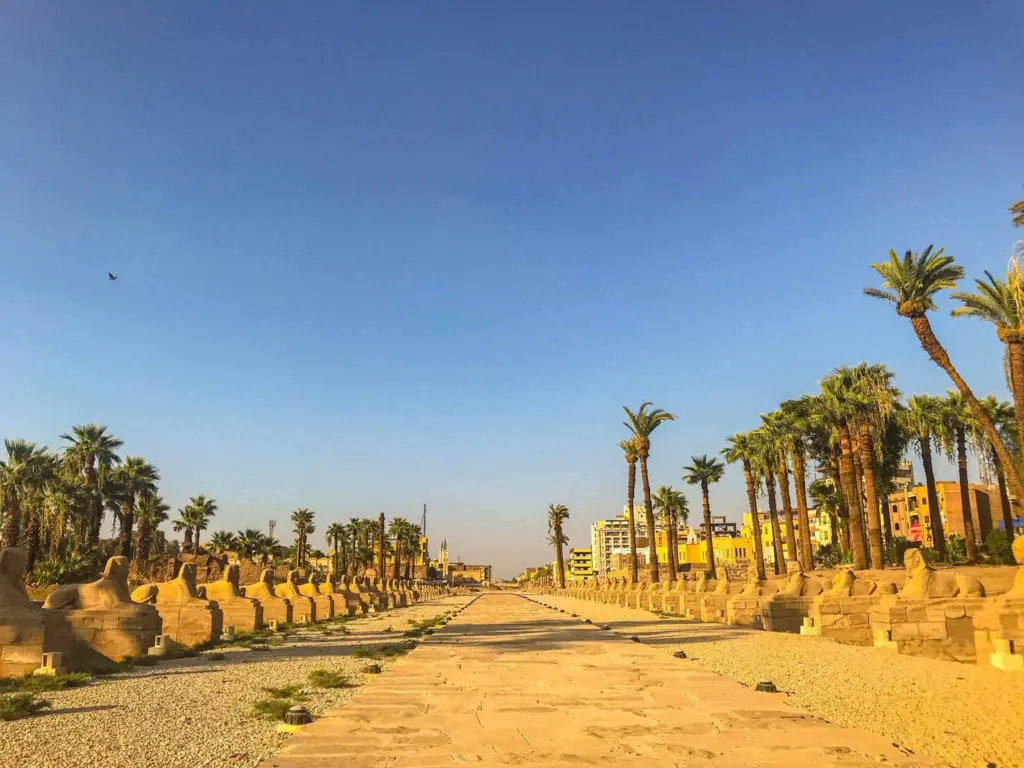
6. Avenue of Sphinxes
The Avenue of Sphinxes, also known as the Sphinx Alley, is a historic processional route that once connected the grand temples of Karnak in the north to Luxor Temple in the south. This extraordinary thoroughfare stretched for approximately 2.7 km (1.7 mi) and was lined with hundreds of sphinx statues.
The sphinxes along this avenue are criosphinxes, featuring a lion’s body and a ram’s head, the latter symbolizing the god Amun. In ancient times, this avenue was a sacred route taken by the gods during important festivals, especially the Opet Festival.

7. Mummification Museum
Situated on the Luxor Corniche overlooking the west bank of the Nile, the Mummification Museum was inaugurated in 1997 with the aim of educating visitors about the mummification techniques that were a key part of the journey to the afterlife, according to ancient Egyptian beliefs.
One of the significant items on display is a well-preserved mummy of a high priest of Amun, which gives you a close-up view of the result of the mummification process. Exhibits include a collection of tools used in mummification, such as hooks, knives, and canopic jars—containers used to store and preserve the viscera of their owner for the afterlife.
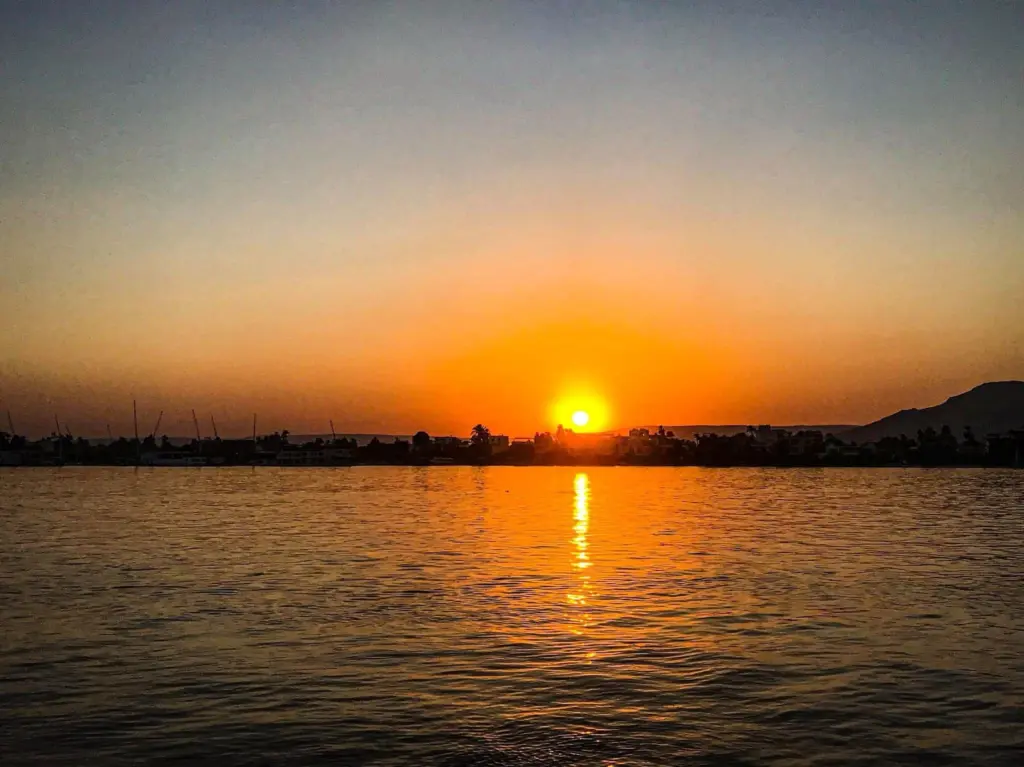
8. The Nile River
The Nile River, the lifeblood of Egypt and the longest river in the world, stretches through Luxor, offering an unparalleled experience of natural beauty.
Here you can ride a felucca boat. A felucca is a traditional wooden sailing boat, often modest in size, with a triangular sail and a design that has remained largely unchanged for centuries. My Couchsurfing host at that time was a Felucca boat driver so we would often have tea on his boat while looking at the sunset after a day of exploration. It was truly a great time.

Best Tours in Luxor
Here are some curated activities you can join that have been proven to be highly rated in Luxor:
- Hot Air Balloon Ride over Luxor Relics – Fly over Luxor’s West bank on an early morning hot air balloon flight. Soar above the Nile and see ancient landmarks like the Colossi of Memnon, Valley of the Kings & Hatshepsut Temple.
- Shared Full-Day Tour to Luxor West and East Banks – Embark on a full-day tour in Luxor with an Egyptologist guide. Explore the city’s magnificent temples by visiting the west and east bank of Luxor.
- Quad Bike Private Safari on the Nile West Bank – For an Egyptian adventure of a different kind, take a quad bike safari in the desert on Luxor’s West Bank. Cross the Nile to embark on your desert safari, exploring the desert and visiting Wadi Ziad.
Best Sites to See on Luxor's West Bank

9. Valley of the Kings
The Valley of the Kings stands as a monumental burial ground nestled in the cliffs of the west bank of the Nile. This ancient necropolis is home to some 63 tombs and chambers ranging in size from a simple pit to a complex tomb with over 120 chambers.
The valley became the principal burial place of major royal figures during the New Kingdom, which spanned from approximately 1539 to 1075 BCE, including the famous Tutankhamun, Seti I, and Ramses II, among others.
The tombs within the Valley of the Kings were carved deep into the limestone rock, signifying an evolution from the previous pyramidal structures associated with royal burials. This change was primarily due to security concerns; the pyramids (such as the Giza Pyramids and the ones in Dashur) had become too conspicuous and were frequently robbed, leading to the hidden and more secure tombs within the Valley.
I’ll say it again here but be careful of taking photos where you’re not supposed to and if you do get caught the maximum bribe you should be paying is around 20 EGP (0.65 USD).
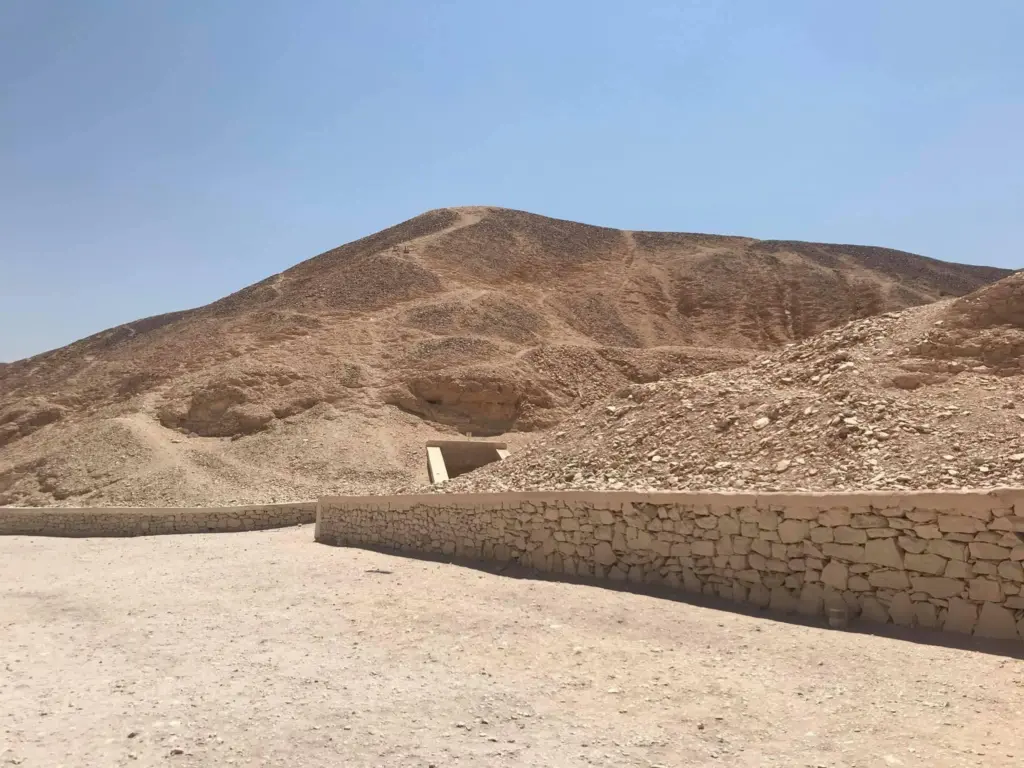
10. Valley of the Queens
The Valley of the Queens, known in ancient times as Ta-Set-Neferu, meaning “the place of the children of the pharaoh,” is located near the Valley of the Kings. This secluded area was chosen as a burial site for queens of the 18th, 19th, and 20th dynasties, as well as princes, princesses, and other members of the nobility.
The valley contains around 70 tombs, with the most famous being that of Queen Nefertari, the Great Royal Wife of Pharaoh Ramses II. Her tomb is renowned for the beauty and intricacy of the paintings that adorn its walls, which are considered some of the best-preserved and most eloquent depictions of the queen in ancient Egyptian art. The vibrant colors and detailed depictions of Nefertari and the deities demonstrate the high regard held for the queen in both life and death.
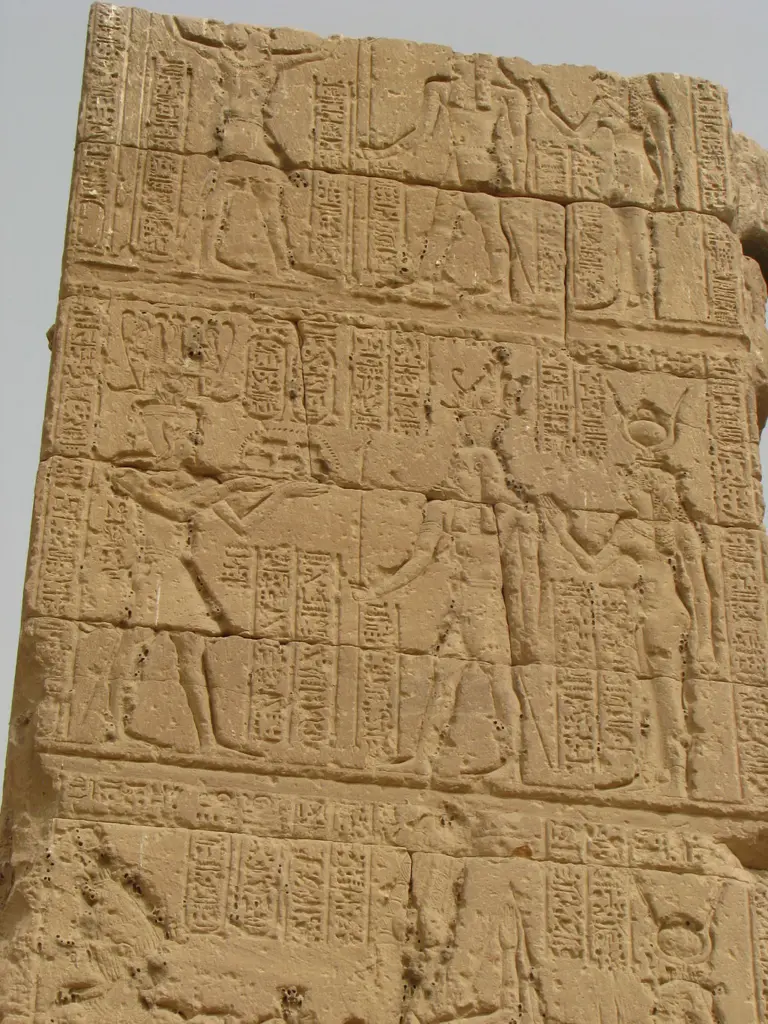
11. Deir el-Shelwit Temple
Deir el-Shelwit is an often overlooked but is still quite a historically rich site.
This small temple, dating back to the late second century CE, stands as an isolated structure away from the dense clustering of tombs and larger temples in the area. It is dedicated to the goddess Isis, one of the most important deities of Egyptian religion, who was worshipped as the ideal mother and wife, the patroness of nature and magic, and a friend to slaves, sinners, artisans, and the downtrodden.
The structure of the temple includes a barque sanctuary, a birth house (mammisi), a Coptic basilica, a hall for the Nubian god Mandulis, and the remnants of a Roman-era fortified garrison.

12. Temple of Hatshepsut
The Temple of Hatshepsut, or Deir el-Bahri, is an ancient funerary shrine, carved out of the cliff face that looms over the desert plain leading to the Valley of the Kings.
This temple is dedicated to Hatshepsut, the second historically confirmed female pharaoh of ancient Egypt, who ruled for about 22 years during the 18th Dynasty.
Constructed under the architectural guidance of Senenmut, the royal steward and architect of Hatshepsut, the temple was designed to serve for her posthumous worship and to honor the glory of Amun.
One of the striking features of the Temple of Hatshepsut is its unique three-level structure with colonnaded terraces, connected by long ramps that were once graced with gardens. This temple is considered one of the incomparable monuments of ancient Egypt due to its clear and rational structure that harmoniously blends with its natural setting.
The temple’s design deviates from the classical Egyptian funerary temple layout—it’s more open, airy, and light than most temples of its kind. It reflects a mastery of symmetry and is considered a significant architectural achievement of the New Kingdom.
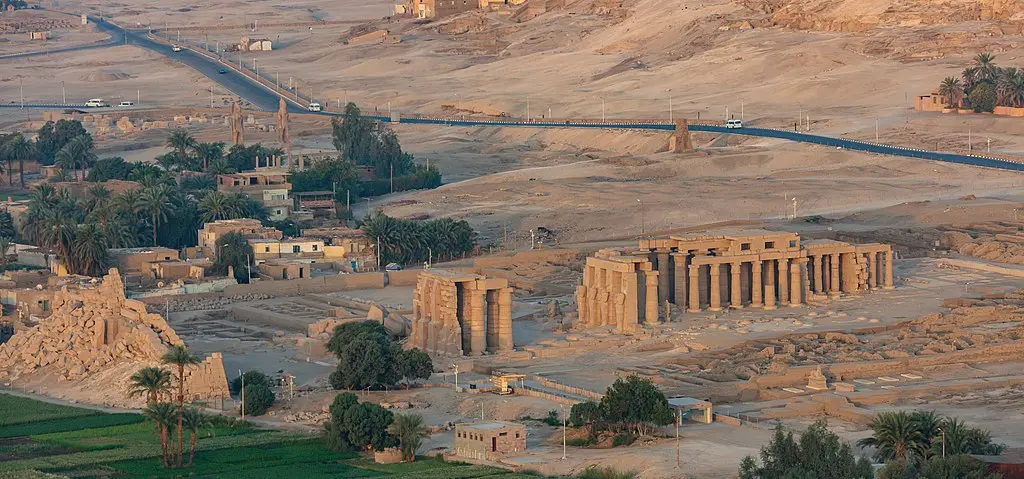
13. Ramesseum
The Ramesseum is the mortuary temple of Pharaoh Ramses II. Built during the New Kingdom, around 1279-1213 BCE, the complex served as a cenotaph, dedicated to the king’s memory and the god Amun.
Ramses II was one of Egypt’s most powerful and celebrated pharaohs, and the Ramesseum reflects his might with its colossal architecture and numerous statuary, including the famous fallen colossus that once inspired Percy Bysshe Shelley’s poem “Ozymandias”. The site originally boasted two massive statues of the pharaoh, approximately 18 m (59 ft) high and weighing over 1,000 tons each, which would have stood guard at the entrance.
The temple, aligned with the river Nile, covers an area of about 20,000 square meters. Its walls are decorated with relief carvings depicting various events from the life of Ramses II, including the Battle of Kadesh, one of his most famous military campaigns, which Ramses II often boasted as a great victory, despite more modern interpretations that suggest it was more likely a stalemate.

14. Colossi of Memnon
The Colossi of Memnon have stood for nearly 3,400 years! These statues are remnants of the largest mortuary temple of the pharaoh Amenhotep III, which once sprawled behind them but has since vanished, its materials scavenged over the millennia.
Serving as monumental guards, these two statues are not only impressive for their sheer size—standing 19.6 m (64 ft) high and weighing about 720 tons—but also for the logistical feat their construction and transportation would have entailed in the 14th century BCE.
Carved from quartzite transported from hundreds of kilometers away, they depict the pharaoh seated, hands on knees, facing the sunrise—a symbol of rebirth and divinity.

15. Mortuary Temple of Seti I
Located in the Theban Necropolis, the Mortuary Temple was constructed for the worship and commemoration of Pharaoh Seti I, who ruled from 1290 to 1279 BCE.
The temple complex is an amalgamation of fine limestone and sandstone, showcasing exquisite bas-reliefs and hieroglyphic inscriptions. Although incomplete, the structure offers rich historical and religious narratives.
Seti I’s temple was designed to serve as an enduring shrine to his memory and as a place for the performance of rituals intended to sustain him in the afterlife.
Inside the temple, the sanctuaries and chapels dedicated to different deities offer a glimpse into the religious syncretism of the time, with gods such as Amun, Re-Harakhte, and Ptah receiving veneration. The temple also served as a place of worship for Seti I himself, who was deified and worshipped here alongside the gods.
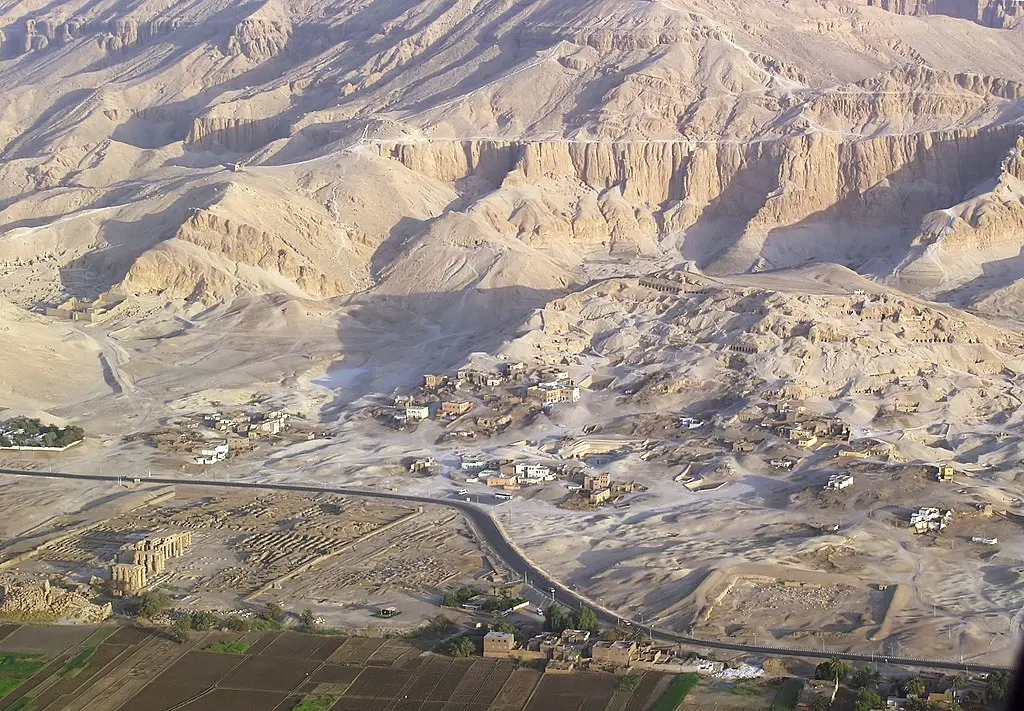
16. Tombs of the Nobles
The Tombs of the Nobles, etched into the Theban hillside, are burial sites for the officials, governors, and priests who played pivotal roles in the administration and religious life of Luxor.
The tombs span several dynasties, with many dating back to the New Kingdom, around 1550 to 1070 BCE.
You’ll be treated to an array of exquisite wall paintings and inscriptions that detail not just the afterlife but also scenes from everyday life, from agricultural practices to festive gatherings, offering a glimpse into the world of ancient Egypt beyond the royal lens.

17. Valley of the Artisans
The Valley of the Artisans, known in Arabic as Deir el-Medina, is a unique site. Why? Unlike the monumental tombs and temples that dominate the landscape of Luxor, this area offers insight into the lives of the people who built them: the workers, craftsmen, and artists.
Established during the reign of Pharaoh Thutmose I in the early 18th Dynasty and inhabited for around 400 years, this village was home to the workers who constructed the tombs in the Valley of the Kings and the Valley of the Queens.
The residents of Deir el-Medina were highly skilled laborers who lived with their families in a tightly-knit community, benefitting from a status that provided them with better living conditions and provisions than the average Egyptian.
The remnants of the village consist of the workers’ modest dwellings, their own tombs, and a temple dedicated to the goddess Hathor, the patroness of the necropolis workers.
Where to Stay in Luxor
In Luxor, you are spoiled for choice when it comes to accommodation. Situated on either the East or West bank, each side would most likely provide fantastic views of the Nile and the sunrise or sunset!
Most establishments would also be near the archaeological sights and would often have great views, especially in the higher floors. Here are some of the best places to stay in Luxor:
Best Hotels in Luxor:
- Djorff Palace – offers a range of amenities including an outdoor swimming pool, garden, terrace, and restaurant. The hotel provides room service, concierge service, and tour organizing facilities. The rooms are equipped with a closet, private bathroom with shower and toiletries, and free WiFi. You can enjoy a breakfast with continental, vegetarian, and vegan options.
- Sonesta St. George Hotel – boasts contemporary accommodations with breathtaking Nile views. You can enjoy free Wi-Fi, a tranquil health spa, and a fine dining restaurant. The hotel’s elegantly furnished rooms offer city or river views, and you can unwind in the sauna or take a dip in the outdoor pool.
- Steigenberger Nile Palace – provides modern accommodations with breathtaking Nile views. The spacious air-conditioned rooms are equipped with satellite TV. The hotel features a fitness center, sauna, and a 24-hour front desk.
Best Hostels in Luxor:
- Happy Land Hotel – offers clean rooms and pristine bathrooms, along with friendly service. You can enjoy a generous breakfast with fruit, fresh juices, and cornflakes on the rooftop terrace. Throughout the day, drinks, fresh juices, traditional tea, and coffee are available. The hotel provides a choice between private rooms and dormitories, with separate accommodations for males and females. All rooms are equipped with air conditioning.
- New Everest Hostel – a comfortable and tranquil place and with a friendly and experienced staff, including the new owner with 21 years of tourism expertise. The hostel offers various amenities such as free breakfast, luggage storage, kitchen facilities, WiFi, 24-hour security and reception, and room service. Amenities provided include Wi-Fi in bedrooms, linen, towels, and soap.
- Peace & Freedom Guesthouse – provides a range of amenities including a restaurant, shared lounge, and water sports facilities. The guesthouse features a 24-hour front desk, shared kitchen, and currency exchange services. Guest rooms are equipped with air conditioning, a flat-screen TV, kitchen, and private bathroom.
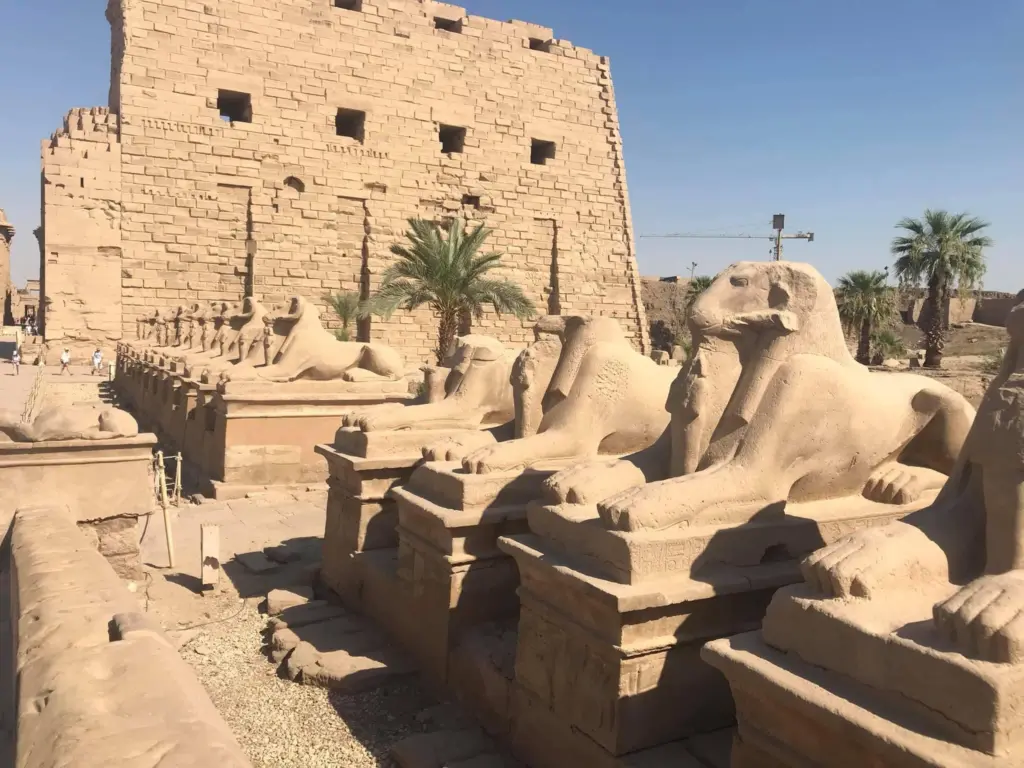
How to Get Around Luxor
Luxor is simple enough and it’s actually possible to simply walk around the East Bank side to visit the various sites. For the West Bank, however, you will need some wheels. Here’s how to get around town:
- Taxis: You can hire a taxi for a day to visit the various sites around the banks but you have to be really careful, perhaps ask your accomodation or agree on a price beforehand. Because before you know it you might be roped into something else just like how my naive self ended up going on a Felucca ride when the taxi was supposed to take me to the Luxor Museum.
- Carriages: You’ll find horses and donkeys and while they are an extremely cheap way to get around, I really can’t recommend it. See for yourself but the animals really don’t look cared for and it’s quite sad.
- Bicycle: Luxor’s relatively flat terrain and numerous bike lanes make it an ideal city for cycling. It’s a fantastic way to explore the less crowded areas, reach nearby attractions such as the Luxor Museum or the Mummification Museum, while enjoying the scenic views of the Nile.
- Public Buses: Luxor has a network of public buses that connect various parts of the city. While buses can be crowded and schedules may not always be reliable, they are an affordable option for getting around Luxor. Be prepared for limited English signage. My Couchsurfing host at that time seemed to know the way around so I just followed.
- Rental Car: If you prefer a more personalized and convenient mode of transportation, you can opt to rent a car to visit plenty of spots and more off-the-beaten-path locations.

How to Stay Safe in Luxor
While Luxor is generally a safe place for tourists, it can be quite overwhelming as well not just because of the heat (if you’re there in summer like I was) but also because of all the touts.
Learn to ignore and move on, don’t even stop for a conversation. Every few meters you will have someone going after you, whether it’s for a Felucca boat ride or something else.
Beware of offers of drugs, it’s illegal in Egypt so don’t risk it for the biscuit.
There are also so many scams to watch out for, it seems like a lot of the people have connections so they’ll rope you into plenty of opportunities to make a quick buck off of you. Watch out for taxis and horse carriages, even if you tell them to go to the destination, they will most likely make roundabouts to drop you off at “shops” whether it’s to feed their horse or if the museum is “closed” temporarily.
Follow your gut and be vigilant and strong. That being said, I definitely recommend getting some travel insurance before heading to Egypt either way, because I got pretty sick in Cairo and could have definitely used it at that time.

Best Time to Visit Luxor
The best time to visit Luxor is during the winter months, from November to February, when the weather is mild and comfortable. During this time, temperatures range between 20°C (68°F) and 25°C (77°F) during the day, with cooler evenings. It’s an ideal time for exploring the ancient sites of Luxor without the scorching heat of the summer months.
Luxor experiences really hot and dry summers, with temperatures frequently exceeding 40°C (104°F) in June, July, and August. I was there around June and boy,the intense heat can make sightseeing uncomfortable, especially during the peak of the day. I remember our tour had to hole up in the hotel to avoid the midday heat, my water bottle was also heating up and it wasn’t fun to drink lukewarm water in the already blistering heat. However, if you can tolerate the heat, visiting during the summer months means fewer crowds and potentially lower hotel rates.
Spring (March to May) and Autumn (September to October) are also good times to visit Luxor. The weather during these seasons is warm, but not excessively hot.

What to Pack for Luxor
When packing for a trip to Luxor, it’s important to consider the climate, cultural norms, and the activities you plan to engage in. Here’s a list of essential items to pack for your trip to Luxor:
- Lightweight and breathable clothing: Luxor has a hot desert climate, so pack lightweight and loose-fitting clothing made of breathable materials like cotton or linen. Opt for comfortable t-shirts, shorts, skirts, or dresses.
- Sun protection: Luxor experiences abundant sunshine, so be prepared to protect yourself from the sun’s rays. Pack sunscreen with a high SPF, a wide-brimmed hat, sunglasses, and a lightweight scarf or shawl to cover your head and shoulders especially when you’re out in the desert for long periods of time.
- Good shoes: Comfortable walking shoes are a must for exploring the ancient ruins and temples of Luxor. Opt for breathable and supportive shoes that are suitable for walking on uneven surfaces and sand.
- Insect repellent: Mosquitoes can be present in Luxor, particularly during the evenings. Even more so when you live closer to the Nile.
- Travel Adapter: Egypt uses Type C and Type F electrical outlets.
How to Get to Luxor
Luxor is a well-connected city in Egypt, and there are several ways to reach it. Here are the most common ways to get to Luxor:
- By Air: Luxor International Airport (LXR) is the main airport serving the city. It has regular domestic and international flights. You can fly directly to Luxor from major cities in Egypt, as well as from international destinations such as Istanbul, Dubai, and some European cities.
- By Train: Luxor is connected to Cairo, Alexandria, and other major cities in Egypt by the Egyptian National Railways. The train journey from Cairo to Luxor takes approximately 9-10 hours, depending on the train type. Overnight sleeper trains with comfortable cabins are available, allowing you to travel while you sleep.
- By Bus: There are both public and private bus services operating between Luxor and Cairo, Alexandria, Aswan, and other destinations. The bus journey from Cairo to Luxor takes around 10-12 hours. Buses are a cost-effective option, and there are different classes of buses available, including air-conditioned coaches with comfortable seating. I recommend going for an overnight trip with Go Bus, it’s what I used going all around Egypt, cheap and comfy.
- By Nile Cruise: If you are already in Egypt and wish to have a unique travel experience, consider taking a Nile cruise to Luxor. Nile cruises are a popular option for travelers, especially those interested in exploring the ancient temples and archaeological sites along the Nile River. There are several cruises such as from Luxor to Aswan or from Cairo to Luxor.
Plan Your Trip to Egypt | Best Travel Resources
Book Your Accommodations
- Booking.com – the world’s leading online booking platform for accomodations around the world, they have an extensive amount of available listings with zero booking fees and best price guarantees.
- Hostelworld – a backpacker’s best friend, Hostelworld has the largest collection of hostels and guesthouses for affordable prices.
Don’t Forget Insurance
- SafetyWing – from Nomad Insurance, an insurance by nomads for nomads. They understand our lifestyle well and have really comprehensive and flexible plans that cater to any traveler.
Find Cheap Flights
- Kiwi.com – my go-to for booking and finding the cheapest flights and it’s helped me save tons of money. They do virtual interlining which is connecting flights from airlines that do not codeshare, so you can find routes that you wouldn’t be able to find normally.
Join Tours & Activities
- GetYourGuide – is one of the best places to find unique tours and activities. I found that it’s an excellent way to meet fellow travelers and create fond memories. They are not only limited to tours as they also offer niche services such as skip-the-line tickets or private transfers.
Catch a Ride
- Rentalcars.com – nothing beats the freedom of the road, Rentalcars.com is the world’s largest online car rental service. They operate across 160 countries so they’re the perfect partner to work with if you find yourself wanting a ride.

